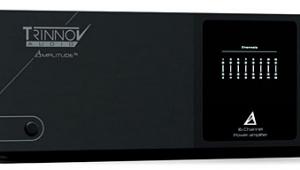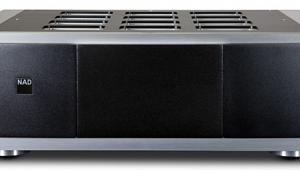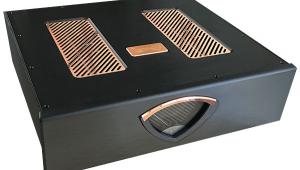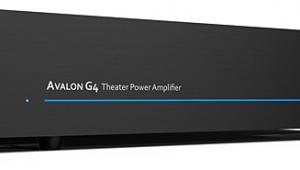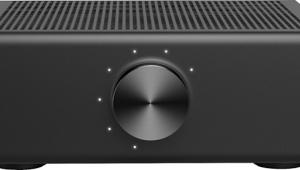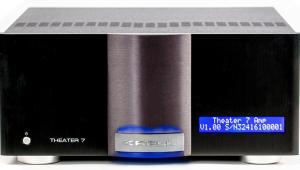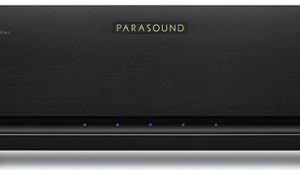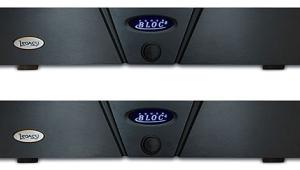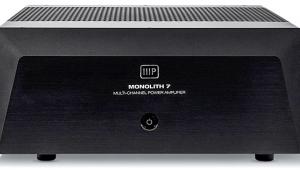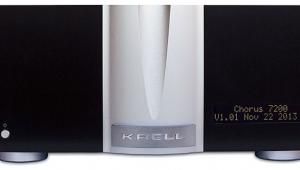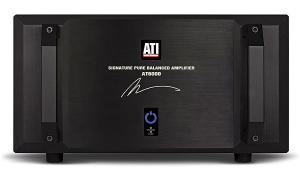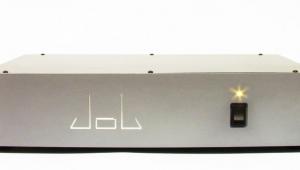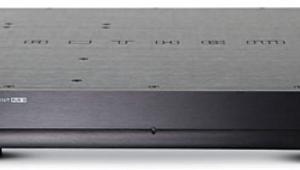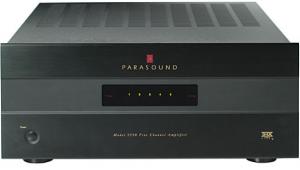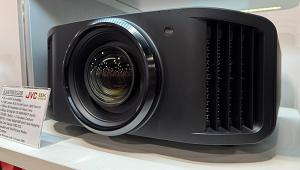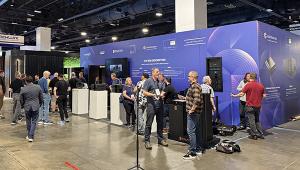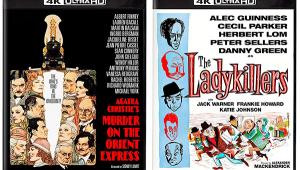Review: Wyred4Sound Mini MC 5-Channel Power Amplifier

I am of the school that believes that more power is always better than less power. That school also professes that amplifiers, while operating within their linear abilities (a big “if”), are not generally distinct in their sonics. And it recognizes that a 90-pound multichannel amp the size of a studio-apartment refrigerator, with a waste-heat output measured in kilo-BTUs, is not consistent with either spinal health or domestic tranquility.
So it has been with some little interest that I have noted a new breed of multichannel amps in the home theater space: small, light, powerful models no bigger than an FM tuner of the previous age, and no more costly (and in plenty of cases, less so) than their hulking progenitors. The enabling technology behind this trend is Class D amplifier design, often referred to — erroneously, or at least, fuzzily — as “digital amplifiers.” (A Class D amp uses pulse-width modulation and switching-mode circuitry, but there is no quantization into digital “words” per se, and no decoding back into an analog. Of course, looked at another way Class D is a self-contained one-bit system, so my argument is to some degree purely semantic.)
The pointy end of this movement is something trademarked as ICEPower, a Class D variant developed in Denmark a dozen or so years back by a team of university double-E wonks and Bang & Olufsen denizens. ICEPower’s workings get into the upper reaches of coding and audio theory, but in brief, it mitigates most of the pitfalls of Class D design.
ICEPower (now wholly owned by B&O) has for some time been offered for license to amp-builders worldwide, resulting in a relative flood of small, cool-running, more-or-less-affordable, high-power amplifiers from builders large and small. (Currently, these span the range from high-end brands MartinLogan and Rotel, through car-audio makers Alpine and Eclipse, to mass-marketers such as Pioneer, Samsung, and others, plus untold millions of mobile phones, using the technology, in miniature, as their repro amps; altogether ICEPower claims more than 100 million channels sold. With and without cheese)
One of the latest multichannel ICEPowered efforts, the Mini MC, comes from Wyred4Sound, a relatively new California outfit that has evolved from an audio repair- and custom-design service to a full-blown (and fast-growing) manufacturer.
The Mini MC is a simple soul: three, five, or seven inputs (we got the 5-channel variant), all present via both balanced XLR and unbalanced RCA jacks, plus five outputs on nice, heavy, metal multi-way binders, and a power switch. Other than a 12v trigger input (to auto-on/off the amp from your system), and a switch for each channel to select between XLR and RCA inputs, that’s it. You hook up the Mini MC, plug it into the wall, and you’re done — and though the amplifier will produce 200 watts into 8? from each (or all) of its five channels, it’s as easy to wrestle into place as a $99 Walmart receiver and runs very little warmer than a $69 DVD player.
There is one other “feature”: a blue “light-strip” of LEDs that illuminates on the front panel when powered. It’s cool — and adjustable for brightness (all the way to “off” if you don’t like that sort of thing) via a trim-pot accessible through bottom-panel.
As to the Wyred4Sound’s “sound” — well, as I implied up top, you’ve come to the wrong shop. It doesn’t have one, nor does any properly designed amplifier that’s operating within its linear range into a load for which it is engineered. That’s three whopping caveats, again, but in my system I’m confident that they were met.
I configured the Mini MC with my everyday loudspeaker suite (Snell Acoustics), preamp-processor (Integra), and disc and digital audio sources. Mostly, I ran all speakers full-range, the better to stress all five channels. My compact fronts deliver solid output to a bit below 40 Hz, at a modest cost in sensitivity, and despite being “mere two-ways” can exploit serious power for serious listening; my center and surrounds are similarly medium-low in sensitivity.
So I set about searching for program to stretch the Mini MC with some confidence. Piano music is always a likely candidate, but a Telarc SACD of the tirelessly flamboyant Lang Lang playing Scriabin failed to do the trick: timbres maintained their focal centers, and the lanky pianist’s crashing chords preserved the full range of Scriabin’s just-this-side of atonal densities, without issue, all the way up to past the loudness levels you’d encounter sitting on the bench next to the player. (And trust me, this is loud.)
Okay, how about movies? No dice. I cherry-picked classic demo scenes from flicks ranging from Amadeus to War of the Worlds, searching for testing transients and exposing explosions, without uncovering a single repeatable wart.
On to rock’n’roll. Tom Petty and the Heartbreakers’ audio-only Blu-ray DTS-HD surround Mojo, though musically uneven, is surely one of the cleanest and most technically accomplished multichannel studio-pop productions yet completed. But again, nothing volunteered itself; I could play a passage like the opening to “Candy,” a barebones bass-drums-keys “bed,” at old-school control-room levels without any hint of power limitations. I listened repeatedly for a “tell” such as any change in the “snick” of the bass-drum beater hitting the skin, on notes in unison with the bass guitar (when maximum power would be required), with no success. Transients maintained their etching, and bass accents their pounding, regardless of whether I set overall volume to “loud,” “real loud,” or “are you kidding me?”
And recall, this is in full, five-channels-driven surround. When I insisted in pushing onward to absurdities I was eventually rewarded by a coarser texture on T.P.’s more up-front vocal lines, but I’m still not convinced this was the amplifier. It could have been woofer (midrange) nonlinearity, or even human-ear overload, since intermodulation occurs in the ear itself at extreme levels. And after even the longest and loudest sessions, when I’d put my hand atop the Mini MC it felt no warmer than my Motorola Comcast cable/DVR box.
In short, the Mini MC does what it claims: produces copious clean, transparent power, from a compact, highly efficient and — at least in audiophile context — affordable package. Don’t know about you, but that’s all I ask of any amplifier.
- Log in or register to post comments
